
AgriLife Extension Hires a New Turfgrass Specialist
Dr. Casey Reynolds has been named the new Texas A&M AgriLife Extension Service state turf specialist and will begin July 1, according to Dr. Travis Miller, Texas A&M University soil and crop sciences associate department head in College Station.

Dr. Casey Reynolds has been named the new Texas A&M AgriLife Extension Service state turf specialist.
Reynolds will be headquartered in College Station in the department of soil and crop sciences.
“We are very pleased to have Dr. Reynolds join our team,” Miller said. “Turfgrass is a commodity that most Texans enjoy, whether in their home lawn or on a football field, and the technology being developed at Texas A&M will help improve quality while reducing all inputs, particularly the amount of water being used in the landscape.
“Dr. Reynolds will work with groups ranging from homeowners to sod farmers to bring relevant information to enhance turfgrass, its maintenance and production.”
Reynolds is coming to Texas after 10 years as a turfgrass research and Extension associate with North Carolina State University, where he performed field, greenhouse and lab research, as well as presented numerous Extension seminars.
“I have a passion for education, both inside and outside the classroom, particularly with regard to interacting with the public and disseminating valuable information to end users,” Reynolds said.
“This passion, combined with my previous research and Extension experience, allows me to be very optimistic that I will be able to immediately contribute to the Extension program at Texas A&M in a meaningful way.”
Reynolds earned his bachelor’s, master’s and doctorate degrees from North Carolina State University, with concentrations in crop science and business management.
In the past, his research responsibilities included planting, plot management, data collection, data analysis and report preparation for turfgrass breeding and selection, as well as management and data collection on approximately 4.7 acres of research trials.
“I have been fortunate enough that my work experience allowed me to relate to and have an impact on different sectors of the turfgrass industry, including lawn care operators, sod producers, athletic field managers and golf course superintendents,” Reynolds said.
“I enjoy working with professionals from each of these sectors, as well as homeowners and weekend warriors interested in learning more about turfgrasses and their proper management,” he said. “I’m very excited about the opportunity to begin working in Texas.”
Clean Your Way to a Healthier School – great tips for the Summer Deep Clean
 Spring cleaning involves more than just getting rid of clutter and opening the windows. It is also an opportunity to protect the health of students and staff. Schools can protect and improve occupant health by keeping classrooms and common areas clean and well-maintained as part of an indoor air quality (IAQ) management program focused on green cleaning and maintenance. Green cleaning involves the use of products and services that reduce negative health and environmental impacts compared with other products and services used for the same purpose.
Spring cleaning involves more than just getting rid of clutter and opening the windows. It is also an opportunity to protect the health of students and staff. Schools can protect and improve occupant health by keeping classrooms and common areas clean and well-maintained as part of an indoor air quality (IAQ) management program focused on green cleaning and maintenance. Green cleaning involves the use of products and services that reduce negative health and environmental impacts compared with other products and services used for the same purpose.Here are some tips you can use to get everyone in your school involved in spring cleaning and IAQ management:
- Take action and create a healthy classroom. Spring cleaning activities can help staff and students see the value of a clean and healthy learning space. Teachers and students can take action by using the classroom checklist in the IAQ Tools for Schools Action Kit! Checklist action items include removing potentially toxic or unapproved cleaning products or air fresheners, and eliminating open food containers to reduce unwanted pests. Using the checklist to perform a classroom walkthrough can be a fun learning activity for students, while educating the teacher on actions they can take to create a healthy and clean learning environment!
- Assess your schools’ green cleaning practices. If your school already has a cleaning and maintenance plan in place, now is a great time to determine whether that plan includes green cleaning strategies, and is being correctly followed and implemented. Look at your school’s purchasing policies and consider switching to more environmentally friendly, less toxic cleaning supplies. Make sure your cleaning and maintenance staff is following IAQ protocols and best practices, such as cleaning and removing dust with a damp cloth and using a vacuum with high-efficiency filters. Check out the resources below for more information.
- The Quick & Easy Guide to Green Cleaning in Schools: This publication, released by the Healthy Schools Campaign, presents five easy steps to a greener, healthier environment for students, faculty and staff.
- Cleaning for Healthy Schools Toolkit: A free “do-it-yourself” tool from the Healthy Schools Network on how to find and implement the use of certified green cleaning products.
- Reduce asthma and allergy triggers that can enter the learning environment. In spring, there is a greater chance of outdoor allergens, such as pollen, entering classrooms. These allergens can exacerbate asthma symptoms, potentially resulting in increased absenteeism. Spring cleaning helps to protect student and staff health, especially the occupants who have asthma or seasonal allergies.
- Learn more on managing asthma in schools by checking out EPA’s online resources.
- Download EPA’s Managing Asthma in the School Environment booklet to learn what you can do to take control of asthma in your school.
- Review additional EPA publications on asthma in schools.
The National Pesticide Information Center (NPIC) has new resources!
A new web app by NPIC! – It works on a desktop, too.A short video about how it works: http://bit.ly/12gvoyW The app: http://npic.orst.edu/mapl Mobile Access to Pesticides and Labels (MAPL) Search for pesticide products by name, site, pest, EPA Registration Number, registrant, or search for a combination of these. For example, search for products registered for use in apple orchards against fire blight, or products with citronella that can be used on horses. When you find the right product, you can bookmark the results, bring up the federal label (pdf), and browse the product’s ingredients, registered use sites, signal word, formulation, and more. This web app is optimized for mobile devices, such as smartphones and tablets, and works on desktop computers as well.
New Q & A: Natural or Green? What does it mean? http://npic.orst.edu/capro/greenmyths.html
New Medical Case Profile: Changing Trends in the Epidemiology of Insecticide Exposures http://npic.orst.edu/mcapro/epidemiology.html
New fact sheets:
Citronella – http://npic.orst.edu/ingred/citronella.html
Iron phosphate – http://npic.orst.edu/ingred/ironphosphate.html
New PestiByte Podcasts – http://npic.orst.edu/pestibytes/index.html
My yard is being sprayed; can my kids go out and play? – http://npic.orst.edu/pestibytes/yardspray.mp3
Don’t let pesticides make your bed bug problem worse! – http://npic.orst.edu/pestibytes/bedbugs.mp3
Also in Spanish! http://npic.orst.edu/pestibytes/bedbugs.es.mp3





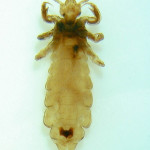



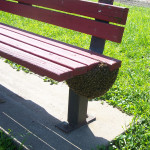



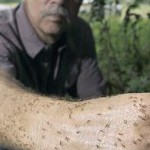
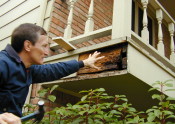
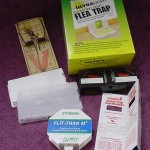




 .
.